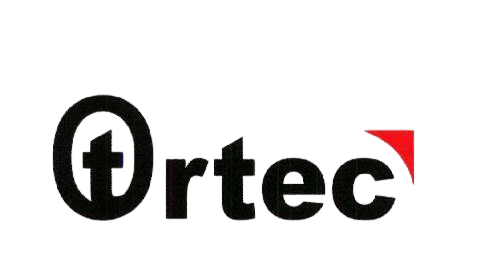
Table of Contents
ToggleTrademark Registration
Trademark registration is the process of legally protecting a brand’s name, logo, or symbol, ensuring exclusive rights to use it in connection with specific goods or services. By registering a trademark, businesses safeguard their identity from unauthorized use by others, enhancing brand recognition and market presence. The registration provides legal protection and helps prevent infringement, securing the business’s reputation and intellectual property.
• Need Help with Trademark Registration ?
Easily Register Your Trademark

Easily Register Your Trademark
More than 300 trademarks successfully registered









Over 2,000 currently in progress.

Trusted by more than
1000+ clients
More than 300 trademarks successfully registered















Over 2,000 currently in progress....

Trusted by more than
1000+ clients

Why Is Trademark Registration Important?
Trademark registration is crucial for several reasons. Firstly, it provides legal protection to your brand identity, including logos, names, slogans, and symbols, safeguarding them from unauthorized use by competitors. This protection helps in preventing brand confusion among consumers and maintains your brand’s distinctiveness in the market. Additionally, trademark registration grants exclusive rights to use the mark in connection with the goods or services it represents, enhancing your ability to enforce your rights against infringers. Moreover, registered trademarks can appreciate in value over time, serving as valuable assets for your business and potentially opening avenues for licensing and franchising opportunities. Lastly, trademark registration offers broader protection nationally and internationally, securing your brand’s reputation and goodwill across various jurisdictions.
Trademark Symbols and Their Uses
Trademark symbols play a crucial role in indicating the status of a trademark and its level of protection. Proper use of trademark symbols helps to assert ownership and provide notice to others regarding the status of a trademark. It’s important for businesses to use these symbols correctly to protect their intellectual property rights and avoid potential legal issues related to trademark infringement.
™ (Trademark Symbol): The ™ symbol is used to indicate that a word, phrase, symbol, or design is claimed as a trademark. It can be used with unregistered trademarks to provide notice to others that the owner claims exclusive rights to the mark in connection with specific goods or services. While the ™ symbol does not necessarily indicate that the trademark is registered, it serves as a warning to potential infringers and helps establish common-law rights.
® (Registered Trademark Symbol): The ® symbol is used to denote that a trademark has been officially registered with the appropriate government trademark office, such as the United States Patent and Trademark Office (USPTO) or the European Union Intellectual Property Office (EUIPO). It indicates that the trademark owner has exclusive rights to use the mark in connection with the goods or services specified in the registration. The use of the ® symbol without proper registration is illegal and can result in penalties.
SM (Service Mark Symbol): The SM symbol is used to denote that a word, phrase, symbol, or design is claimed as a service mark rather than a trademark. A service mark is used to identify and distinguish services provided by one party from those of others. While similar to the ™ symbol, the SM symbol specifically applies to services rather than tangible goods.
℠ (Service Mark Symbol Alternative): In some jurisdictions, such as the United States, the ℠ symbol is also used to indicate a service mark, similar to the SM symbol. However, both symbols serve the same purpose of identifying and protecting service marks.
Trademark Classes
Trademarks are classified into different classes according to the kind of products or services they represent, with the Nice Classification, established by the World Intellectual Property Organization (WIPO), serving as the standard framework. This system comprises 45 trademark classes, each representing specific categories of products or services. Choosing the appropriate class is vital for efficient registration and protection, as it ensures that trademarks are accurately categorized for legal purposes. Understanding the nuances of this classification scheme is crucial for companies seeking to safeguard their intellectual property, enabling them to precisely identify the relevant category for their goods or services and ensure comprehensive protection against infringement.
What Can You Register As a Trademark?
You can register various elements as trademarks, including words like brand names or slogans, logos, letters, numbers, shapes such as unique product packaging, specific colors or combinations, distinctive sounds or jingles used in branding, unique scents, and in some cases, tastes or textures associated with products. Essentially, anything that helps identify and distinguish your goods or services from others can potentially be registered as a trademark, provided it meets legal requirements for distinctiveness, non-descriptiveness, and non-functionality. Consulting with a trademark attorney or professional can help determine eligibility and navigate the registration process effectively.
Online Procedure of Trademark Registration
Step 1: Begin with a Wacky Brand Name
Step 2: Prepare the Trademark Application
Step 3: File the Application
Step 4: Examination Process
Step 5: Publication in Trademark Journals
Step 6: Trademark Opposition
Step 7: Hearing on Opposition
Step 8: Registration Certificate Issuance
Trademark registration in India is a comprehensive process designed to safeguard brand identity and prevent unauthorized use. By following these steps diligently, businesses can establish a strong legal foundation for their brands, ensuring long-term success and protection in the marketplace.
Types of Trademark Registrations in India
There are 7 different types of Trademarks that are registered in India:
- Product Mark
One of India’s most substantial types of Trademarks is the Product mark. It is a mark linked to the products or goods, but it does not include services. The use of product marks is to recognize the source of a product and differentiate the products manufactured and sold by one person from the others.
- Service Mark
Service mark is a mark linked to the services and not the products or goods. A service mark is used to recognize the source of assistance. A service mark differentiates the services of one person from that of another. It signifies the services offered by a company and is used in the service business where the definite goods are not traded under the Trademark as provided by the Trademark Act 1999.
- Collective Mark
The mark used by the group of companies and protected by the group collectively is termed collective marks. The effect is used to represent or inform the public at large about the unique idea of the product. It is used to promote certain products with specific characteristics in that field.
- Certification Mark
A certification mark is used to describe the standards of the goods or services. It safeguards the consumers of the goods or services that such product encounters the safety and other set standards. The certification mark on the product signifies that the product has gone through the quantified standard tests. It safeguards and assurances the consumers that manufacturers have assumed or gone through an audit process to safeguard the anticipated quality of the products.
- Shape Mark
A mark used to indicate the shape of goods, their packing, etc., are termed Shape Mark as provided by the Trademark Act. It is used only when it is likely to present the product’s shape. These shape marks make it different from the other products. If the form has some distinctive features, such effects can be registered under the Trademark Act.
- Pattern Mark
A mark that comprises a pattern capable of identifying the product or services that originate from a particular undertaking and can be distinguished from the other project can be termed the Pattern Trademark as provided by the Trademark Act. The method of evaluation is similar to other Trademarks.
- Sound Mark
A sound mark is a mark used when a specific sound performs the purpose of uniquely classifying the source of a product or a service; it is termed as sound mark. In such cases, such sound is connected with a company or its products or services. It is provided by the Trademark Act.
Benefits of Trademark Registration
Trademark registration serves as a cornerstone in preserving the identity and reputation of businesses across India. Beyond its fundamental role in safeguarding intellectual property rights, trademark registration offers a plethora of benefits that can significantly impact the growth and success of Indian businesses. Let’s delve deeper into each of these advantages to elucidate why obtaining trademark registration is imperative for businesses in India.
-
Acquisition of Intellectual Property Rights: Trademark registration empowers individuals and businesses to assert ownership over a distinctive mark intended for their goods or services. By successfully registering their trademark, they secure valuable intellectual property rights, granting them legal protection and exclusivity in the use of that mark. Governed by Section 18 of the Trademarks Act, trademark registration enables owners to safeguard their brand identity from unauthorized use and potential infringement by others.
-
Exercise of Exclusive Control: Upon trademark registration, proprietors gain exclusive rights to utilize the registered mark in connection with specific goods or services covered by the registration. This exclusivity ensures that no other entity can use an identical or confusingly similar mark for similar products or services in the marketplace. Empowered by Section 28 of the Act, trademark owners can take legal action against any unauthorized use, thereby safeguarding their brand reputation and market position.
-
Legal Protection against Infringement: Trademark registration offers robust legal protection against infringement under Section 29 of the Act. With a registered mark, proprietors have a clear advantage in enforcing their rights in case of any unauthorized use or attempts to pass off a similar mark. This legal provision enables trademark owners to initiate legal proceedings and seek appropriate remedies, such as injunctions and damages, against infringing parties, thereby ensuring the integrity and distinctiveness of the mark.
-
Legal Protection against Objectionable Use: Unlike common law protection, which primarily revolves around preventing consumer confusion, Section 29 of the Trademarks Act provides broader protection. It prohibits objectionable use of a registered mark, offering advantages not available to proprietors of unregistered marks. This means that even if the mark’s distinctiveness is eroded due to widespread use, its statutory protection remains intact, providing a comprehensive shield against unauthorized use.
-
Legal Recognition for the Trademark: Trademark registration establishes a legal record of ownership, holding significant weight in legal proceedings. According to Section 31 of the Act, in any legal dispute involving a registered mark, the fact that a person is the registered proprietor serves as prima facie evidence of the mark’s validity. This recognition simplifies the process of enforcing trademark rights, reducing the burden of proof and enabling proprietors to defend their mark against infringement or counterfeiting.
-
No Impact on IPR Rights due to Trademark’s Popularity: Section 36 of the Act safeguards the registered trademark from becoming invalid merely due to its popularity or widespread use as a common name. Even if extensive advertising or usage leads to the mark gaining popularity and becoming synonymous with the product, the registered rights endure, providing continued legal protection against unauthorized use by third parties.
-
Registration of Different Kinds of Trademarks: The Trademarks Act accommodates various types of marks, such as Collective Marks (Sections 61 to 68) and Certification Trade Marks (Sections 69 to 78). This allows individuals or organizations to register not only standard trademarks but also collective marks representing associations of traders and certification marks indicating specific qualities or standards of goods or services.
-
Ownership of Trademark as an Asset: Trademark registration confers exclusive ownership rights to the proprietor, transforming the mark into a valuable intangible asset. This enhancement of the brand’s overall value and marketability enables proprietors to leverage their registered trademark for licensing, franchising, or other commercial purposes, thereby generating additional revenue streams and strengthening the brand’s position in the market.
-
Establishment of the True Origin of Products: By registering a trademark and using it as an indicator of the product’s origin, proprietors establish a strong association between the mark and the goods or services it represents. This eliminates any doubt about the source of the products in the minds of consumers, thereby enhancing brand recognition, consumer trust, and loyalty.
-
Trademark Publicized to Deter Possible Infringements: Sections 6, 11, and 12 of the Act mandate the maintenance of a public register containing all registered trademarks’ particulars, open to public inspection. This publicizing of registered trademarks informs the public about existing trademarks and prevents others from adopting similar marks. It acts as a deterrent against potential infringers, as they can easily access information about registered marks and avoid unauthorized use to avoid legal repercussions.
-
International Protection: India’s membership in the Paris Convention for the Protection of Industrial Property (Sections 154 & 155) enables Indian applicants to secure priority and privileges for trademark registration in other member countries. This international recognition ensures that Indian brands can protect their trademarks abroad, facilitating global expansion and safeguarding their intellectual property rights in international markets.
-
Retention of Trademark Rights During Business Expansion: Trademark registration provides a robust foundation for businesses planning to expand their operations or enter new markets in India. With the protection granted by registration, businesses can confidently invest in their brand and marketing efforts without fear of infringing on other trademarks. Moreover, it establishes a clear path for future growth, licensing, and franchising opportunities, as potential partners or investors recognize the value and legal standing of the registered mark.
Why Should You Register Your Trademark?
Registering your trademark provides essential legal protection and exclusive rights to use your mark, preventing unauthorized use by competitors and enhancing brand recognition and trust. It adds value to your business, facilitates global expansion, and enables legal recourse against infringement. With exclusive rights, long-term protection, and licensing opportunities, trademark registration is crucial for safeguarding and leveraging your brand assets, deterring infringement, and ensuring the longevity and success of your business.
What are the documents required for Trademark registration?
Documents Required for Individual or Sole Proprietor/Proprietor:
- Logo or Trademark Copy (optional): A JPEG or PNG format copy of the logo, 8X8 cm in size, can be colorful or black and white. Alternatively, a word mark can be used.
- Form TM-48: Authorization form signed by the applicant, allowing a Trademark Agent/Attorney to file the application.
- Proof of Identity: Document confirming the identity of the owner or proprietor of the firm.
- Proof of Address: Document verifying the address of the owner or proprietor of the firm.
- Trademark Description: Description of goods or services.
- Contact Details: Mobile number and email address of the sole proprietor.
Documents Required for Company/Partnership or Limited Liability Partnership (LLP) – MSMEs:
- Logo or Trademark Copy (optional): JPEG or PNG format copy of the logo, 8X8 cm in size, colorful or black and white. Alternatively, a word mark can be used.
- Form TM-48: Power of attorney signed by the applicant, authorizing a Trademark Agent/Attorney to file the application.
- Udhyog Aadhaar Registration Certificate or Startup Recognition Certificate issued by DPIIT.
- Partnership Deed or LLP Incorporation Certificate or Certificate of Incorporation of Company.
- Identity Proof: Proof of identity of the authorized signatory of the organization.
- Address Proof: Proof of address of the authorized signatory of the organization.
- Digital Signature Certificate (DSC), if filing for trademark registration online.
Documents Required for Company/Partnership or Limited Liability Partnership – Other than MSMEs:
- Logo or Trademark Copy (optional): JPEG or PNG format copy of the logo, 8X8 cm in size, colorful or black and white. Alternatively, a word mark can be used.
- Form TM-48: Authorization form signed by the applicant, allowing a Trademark Agent/Attorney to file the application.
- Partnership Deed or LLP Incorporation Certificate or Company Incorporation Certificate.
- Identity Proof: Proof of identity of the organization’s authorized signatory.
- Address Proof: Proof of address of the organization’s authorized signatory.
Documents Required for Trust/Society/Statutory Body/Others – MSMEs:
- Logo or Trademark Copy (optional): JPEG or PNG format copy of the logo, 8X8 cm in size, colorful or black and white. Alternatively, a word mark can be used.
- Form TM-48: Authorization form signed by the applicant, allowing a Trademark Agent/Attorney to file the application.
- Udhyog Aadhaar Registration Certificate.
- Document Showing Existence: Document demonstrating the existence of the organization, such as a trust deed or registration certificate.
- Identity Proof: Proof of identity of the organization’s authorized signatory.
- Address Proof: Proof of address of the organization’s authorized signatory.
Documents Required for Trust/Society/Statutory Body/HUF/Others:
- Logo or Trademark Copy (optional): JPEG or PNG format copy of the logo, 8X8 cm in size, colorful or black and white. Alternatively, a word mark can be used.
- Form TM-48: Authorization form signed by the applicant, allowing a Trademark Agent/Attorney to file the application.
- Proof of Existence: Document demonstrating the existence of the organization, such as a registration certificate, trust deed, or any other relevant document.
- Identity Proof: Proof of identity of the organization’s authorized signatory.
- Address Proof: Proof of address of the organization’s authorized signatory.
Additionally, there is provision for trademark opposition, allowing any person to file a notice of trademark opposition within four months of the application’s advertisement in the Trademark Journal, accompanied by sufficient proof of evidence.
Who can Apply for Trademark Registration?
Trademark registration in India serves as a crucial mechanism for safeguarding distinctive trademarks, phrases, or original concepts. Individuals, companies, and charitable organizations are eligible to apply for trademark registration, but specific requirements vary depending on the entity type. Here’s a breakdown of the entities eligible for trademark registration in India:
-
Individual: An individual, irrespective of engaging in commercial activities, can apply for trademark registration for a symbol or word they intend to use.
-
Joint Owners: If a business has joint owners, they can jointly apply for trademark registration, and the application must include the names of all owners.
-
Proprietorship Firm: A proprietorship firm can submit a trademark application under the name of its owner. However, it’s essential to note that the proprietorship name and the business name provided in the application are considered independently.
-
Partnership Firm: In the case of a partnership firm with a maximum of 10 members, the trademark application should include the names of all partners. If a minor partner is involved, the guardian representing them must be identified.
-
Limited Liability Partnership/LLP: Trademark applications for LLPs should be made in the LLP’s name. Each partner in the LLP maintains a distinct identity, and the trademark belongs to the LLP itself, making the partners ineligible to be applicants.
-
Indian Company: Indian businesses, regardless of their form (private limited, limited, etc.), are required to file trademark applications in the name of the company. Directors of the company cannot simultaneously act as trademark applicants.
-
Foreign Company: If a foreign-incorporated company seeks trademark registration in India, the application must be filed under the name registered abroad. Additionally, it’s crucial to specify the type of registration, the originating country, and the applicable law.
-
Trust or Society: When submitting a trademark application on behalf of a trust or society, the controlling trustee, chairperson, or secretary must be identified.
What are The Eligibility Criteria for Trademark Registration
The eligibility criteria for trademark registration in India are relatively straightforward, ensuring that the trademark meets certain standards to be eligible for protection. Here’s a concise overview:
-
Distinctiveness: The trademark must be distinctive, meaning it should be capable of distinguishing the goods or services of one entity from those of others. Marks that are too generic or descriptive may not qualify for registration.
-
Non-Descriptiveness: The trademark should not be merely descriptive of the goods or services it represents. It should not directly indicate the nature, quality, or characteristics of the products or services.
-
Non-Deceptiveness: The trademark should not be deceptive or likely to mislead consumers about the nature, quality, or origin of the goods or services.
-
Non-Conflict with Existing Trademarks: The proposed trademark should not conflict with existing trademarks. It should be sufficiently different from trademarks already registered or applied for in the same or related classes of goods or services.
-
Compliance with Trademark Laws: The trademark must comply with the provisions of the Indian Trademarks Act, 1999, and related regulations. It should not violate any legal requirements or prohibitions specified under the law.
-
Use in Commerce: While it’s not a strict requirement for registration, the trademark should ideally be in use or intended to be used in commerce. Actual use of the mark strengthens its distinctiveness and enhances the chances of successful registration.
-
Applicant’s Legal Capacity: The applicant must have the legal capacity to apply for trademark registration. This includes individuals, businesses, or entities that are eligible to own property and enter into legal agreements.
How can I check my Trademark registration status?
After submitting the trademark application, you can track its status through the following steps:
-
Visit the website https://tmrsearch.ipindia.gov.in/eregister/
-
Select the option labeled “Trade Mark Application/Registered Mark” on the left side of the page. This action will reveal two options, among which you should choose “National IRDI Number.”
-
Enter the trademark application number along with the captcha code provided. Then, click on the “View” button.
-
Upon clicking “View,” the website will display the current status of your trademark application.
Trademark Filing Process in India
The trademark filing process in India involves several steps:
-
Pre-filing Search: Before filing a trademark application, it’s advisable to conduct a search to ensure the chosen mark is unique and not already registered or in use by others.
-
Filing the Application: The application for trademark registration can be filed online through the official website of the Intellectual Property India (IPI) or manually at the Trademark Registry office. The application must include details such as the applicant’s name, address, and logo or wordmark to be registered.
-
Examination: After filing, the trademark application undergoes examination by the Trademark Office to ensure compliance with legal requirements and assess the distinctiveness of the mark.
-
Publication: If the trademark application passes the examination, it is published in the Trademark Journal to invite objections from the public within a specified period, typically four months.
-
Opposition Proceedings: During the publication stage, third parties have the opportunity to oppose the trademark registration if they believe it conflicts with their existing rights. If opposition is filed, both parties may engage in legal proceedings to resolve the dispute.
-
Registration: If no opposition is received or successfully overcome, the trademark proceeds to registration. The Registrar issues a Certificate of Registration, granting exclusive rights to the trademark owner.
-
Renewal: Trademark registrations are valid for ten years from the date of application and can be renewed indefinitely by filing a renewal application and paying the requisite fees.
Throughout the process, it’s crucial to comply with procedural requirements, respond to office actions or objections promptly, and seek legal advice if needed to navigate the complexities of trademark law effectively.
Cost of Trademark Registration in India
For dedicated business owners, safeguarding their business is paramount, recognizing the toil invested in its creation. Trademark registration serves as vital brand insurance, providing recourse against infringements on business names or designs. In India, the cost of trademark registration comprises government fees and professional fees, with the former fixed nationwide. Government fees range from ₹4,500 to ₹10,000 per application per class, depending on entity type and mark type. Professional fees vary and are advisable due to the complexities of trademark registration, particularly in navigating potential objections or oppositions. Legal fees for opposition or objection proceedings can amount to ₹2,700, with expert assistance recommended for effectively addressing objections from either third parties or the government. Ultimately, investing in trademark protection not only safeguards businesses but also ensures they can navigate legal challenges effectively, thereby preserving their hard-earned reputation and market presence.
What is Trademark Objections
Trademark objections occur when the government, through the trademark examiner, raises concerns about the registrability of a trademark application. These objections don’t necessarily lead to outright rejection but require the applicant to provide sufficient justification for the trademark’s registration. Common reasons for objections include similarity to existing trademarks, lack of distinctiveness, descriptive nature of the mark, or violation of intellectual property rights. Addressing objections typically involves careful examination and legal analysis to formulate a compelling response that satisfies the examiner’s concerns. Seeking expert assistance, such as from an intellectual property lawyer, is advisable to navigate the complexities of the objection process effectively. Ultimately, overcoming objections ensures the trademark’s registration and protects the applicant’s rights to their brand identity, preventing potential conflicts and infringement issues in the future.
What is Trademark Opposition
Trademark opposition is a formal legal proceeding where third parties or competitors challenge a trademark application. These oppositions are filed with the trademark office during a specific period after the application’s publication. Opposers argue that granting the trademark could infringe on their existing rights or lead to confusion among consumers. The opposition process allows parties to present evidence and arguments supporting their claims. Resolving oppositions may involve negotiation, mediation, or adjudication by the trademark office. Successful oppositions can result in the rejection or modification of the trademark application, protecting the opposer’s interests and maintaining clarity in the marketplace.
What is the validity of the Trademark ?
The Trademark is registered for ten years by the Registrar. Hence, following the date of registration indicated in the registration certificate, a Trademark registration will be valid for ten years. The Trademark registration must be entered into the Register of Trademarks by the Registrar when it is issued.
By submitting a Trademark renewal application to the Registrar prior to the initial registration expiry, the Trademark owner can extend the Trademark registration for an additional 10 years.
Under the Trademark Act 1999, the duration of Trademark registration in India is ten (10) years. The renewal for a further 10-years period will require prescribed renewal fees.
You’ll have to decide if you want to renew or not before the expiration date. Anyone can claim your Trademark after 10 years if not renewed.
Why Mybrandname ?

Frequently asked questions
Yes, corrections can be made to a trademark application in India, but they are limited to certain aspects as per Section 22 of the Trademarks Act, 1999. The Registrar of Trademarks allows amendments or corrections primarily for clerical errors, such as mistakes in the name, address, or similar details. Additionally, rectifications can be made for errors in the description of goods or services associated with the trademark.
A trademark application requires a minimum of 18-24 months to get approval if the application is accepted without any opposition or objection. However, if any opposition or objection is raised against the application, it might take more than 24 months to approve your trademark application . However, the trademark application number is usually issued within one or 2 days after filing.



Experience a hassle free filing process as our expert lawyers guide you step by step
Let our expert lawyers guide you through a hassle-free filing process, ensuring each step is simple and stress-free for you. Mybrandname has over 70+ licensed lawyers. Consult Now!
Our Other Services
With our registration service, navigating the complexities of legal documentation becomes effortless. Whether you’re establishing a new business entity, securing intellectual property rights, or ensuring compliance with regulatory requirements, our experienced team is here to guide you every step of the way.
Our Other Services
With our registration service, navigating the complexities of legal documentation becomes effortless. Whether you’re establishing a new business entity, securing intellectual property rights, or ensuring compliance with regulatory requirements, our experienced team is here to guide you every step of the way.



Get Answers to All Your Questions You Might Have
We will answer any questions you may have about our online sales.

